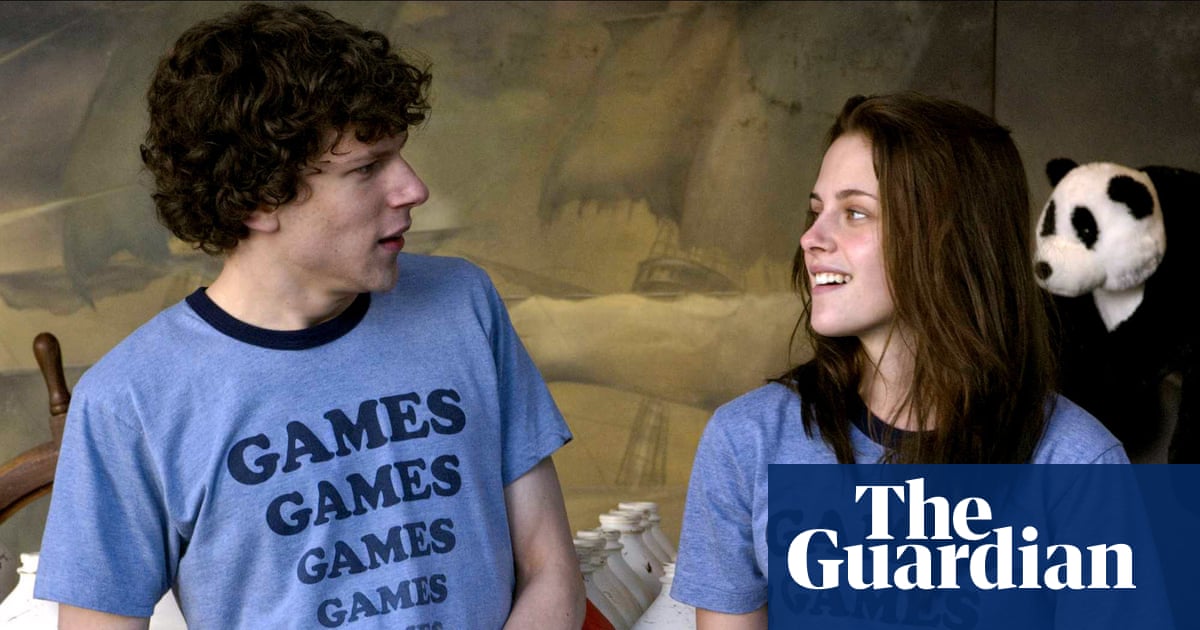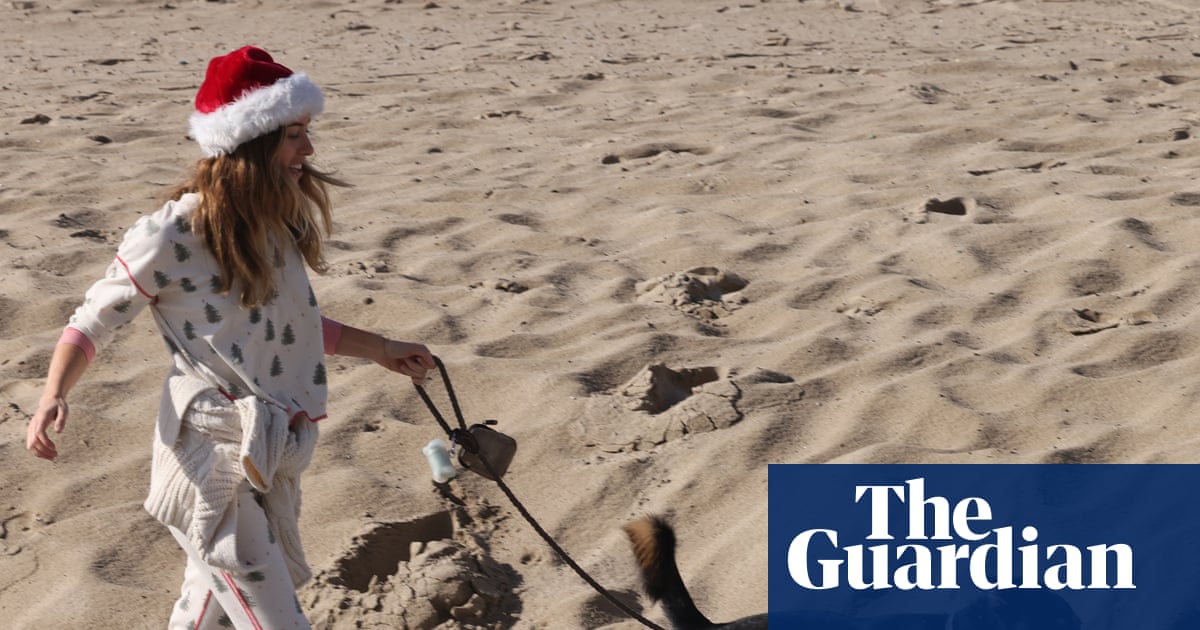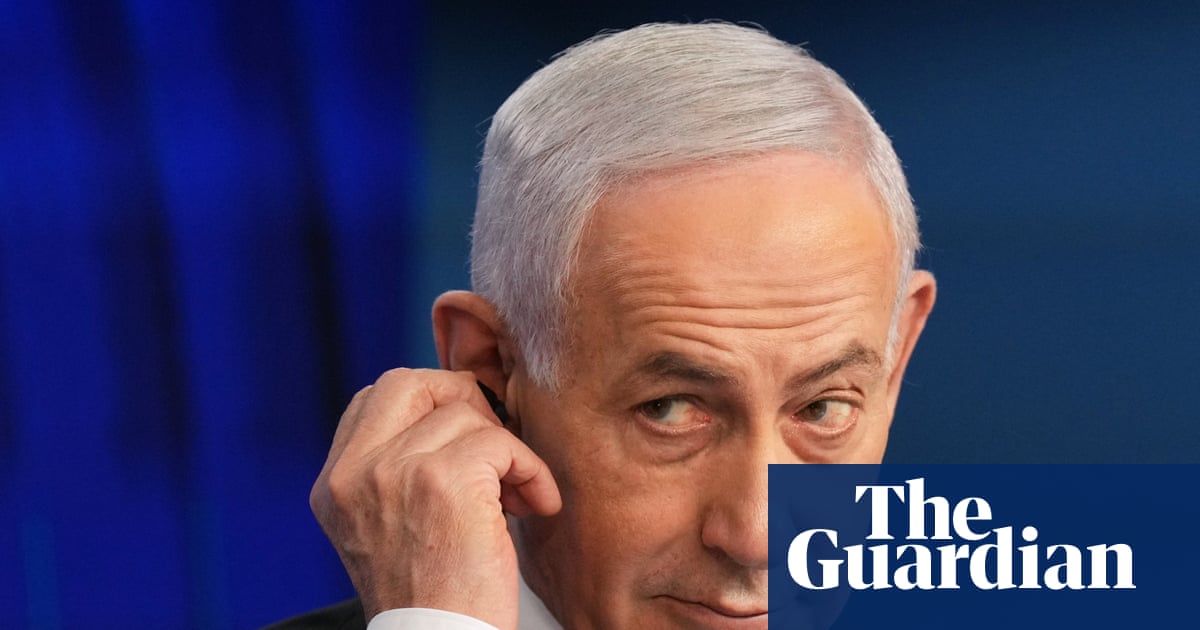“Pick up the rope! Take the strain! Steady! Pull!” When the referee barks those commands, eight adrenalin-fuelled competitors on each team muster every ounce of strength in their bodies and attempt to haul one another across the crumbling earth. Clutching a rope made of hemp or polypropylene, the first team to tug their opponents four metres from their starting position is the winner. Competitors seek an optimal foothold in the ground by digging in their steel-plated heels – but strictly no spikes are allowed – while coaching staff guide and encourage them to victory as exhaustion takes it toll. In the round-robin stages, each contest lasts two ends and the top four teams reach the semi finals; the knockout rounds and final are decided over three ends. Competitors range from their teens to the 70s, with varying age and weight categories. All have one thing in common: a fierce desire to win.
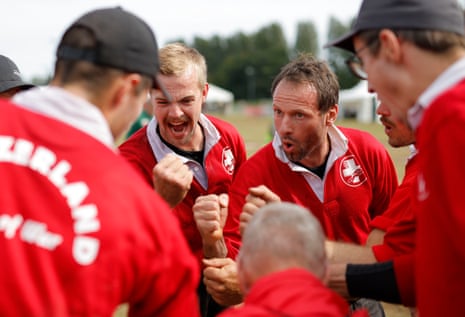
-
The Swiss team in the senior mens 600kg category final v the Basque Country.
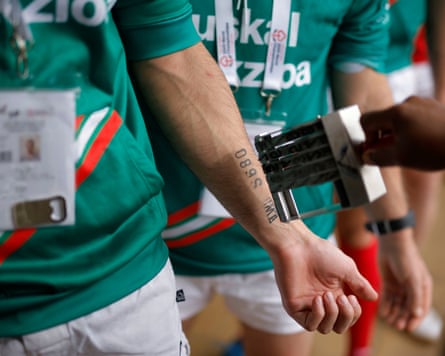
-
A competitor gets stamped on the thigh to verify his weight class.
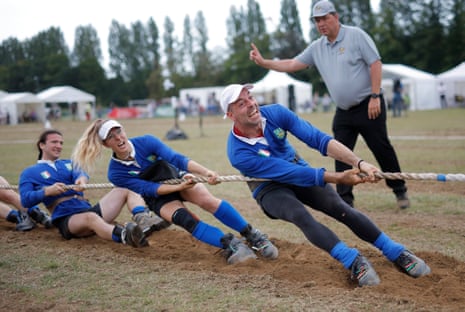
-
The Italian senior mixed 580kg team get a warning from an umpire for sitting down.
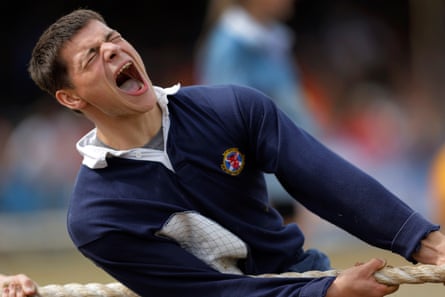
-
A Scotsman in the senior mens 680kg competition.

-
The Ukrainian team in the U23 mixed 560kg competition.

-
Celebrations for the Swiss senior mens 560kg team as they win their final over the Basque Country.

-
Some of the England team react after winning a bronze medal in the junior women’s 480kg competition.
No one knows when tug of war first started, but it has a rich history as the purest contest of human strength. Evidence shows that it featured in ceremonies and cults all over the world from Hawaii to Korea, Egypt to South America. For example, around the year AD1000, it can be found in the stories of Scandinavian and Germanic heroes from the so-called “kräftige spiele” or “power games”. Though it was never an official contest in the ancient Olympics Games, it did feature in the modern Olympics from Paris 1900 through to Antwerp 1920, with Great Britain winning the gold medal on two occasions. The sport was revived in the 60s and international matches have been staged every year since 1964. The world championships were last held in the UK in Blackpool in 2000.
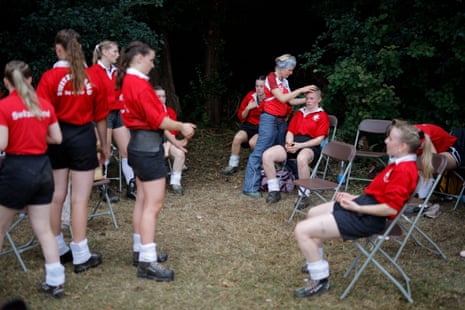
-
A member of the Swiss women’s U23 500kg team gets a head massage ibetween matches.

-
The Swedish team in the senior men’s 680kg competition wait to be called for their match against Ireland.
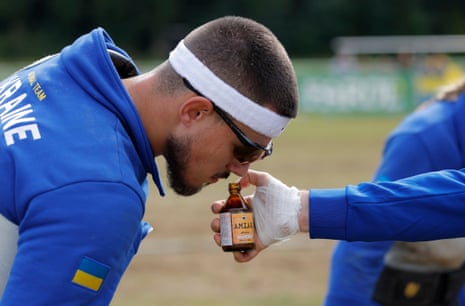
-
A member of Ukraine’s 520kg junior mixed team takes a sniff of smelling salts.

-
The hand of a competitor from the Basque Country, covered in sticky resin to help him grip the rope.
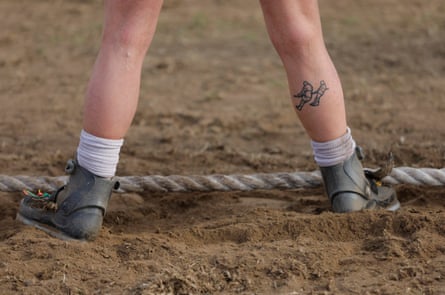
-
An English competitor with a tug of war tattoo on her calf.
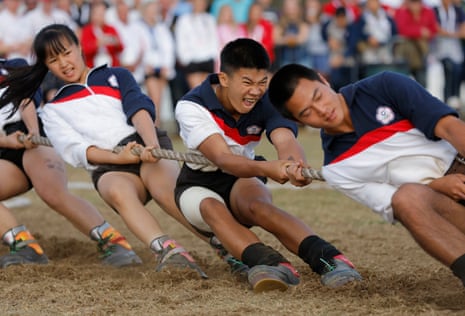
-
The Chinese Taipei team in the final of the U23 mixed 560kg category against England.
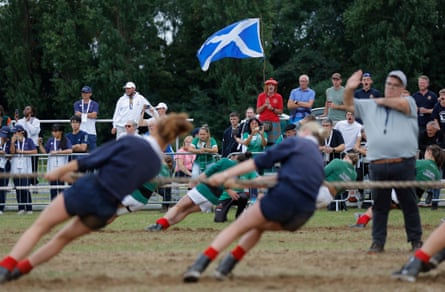
-
A Scotland supporter cheers on his team in the women’s U23 500kg category in which they won bronze.

-
Competitors from the Ireland men’s senior 680kg team look anxiously towards the referee for the order to pull.
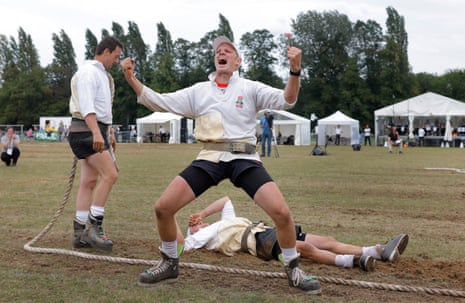
-
Ian Robinson celebrates as the England senior men’s 640kg team win their final over Switzerland.
Tug of war has aspirations of being reinstated into the Olympic programme one day. Dan McCarthy, president of the Tug of War International Federation, says: “Tug of war is a very basic sport in one aspect, but a highly technical one in another. People have this idea that tug of war is for big, heavy men – unfit men – which is a total misunderstanding of what we’re presenting here. We have different weight classes for men, women, and mixed-gender tournaments, which are becoming very popular because they’re gender equal across the board. If we have any hope of getting into the Olympics, I will be pushing for mixed classes. There is fierce competition here, but it’s a harmony of competition. There’s no malice between teams. Win, lose or draw, everybody shakes hands.”

-
A Swiss competitor in the senior mens 680kg category gets a double wet sponge to the face from a coach.
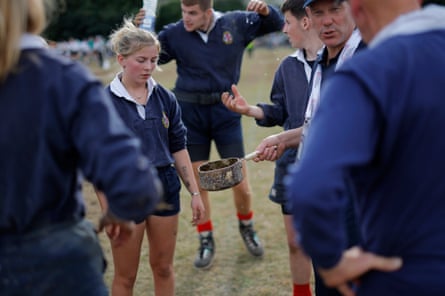
-
The coach for the Scottish U23 mixed 560kg team holds out an old pan containing sticky resin for people to use on their hands.
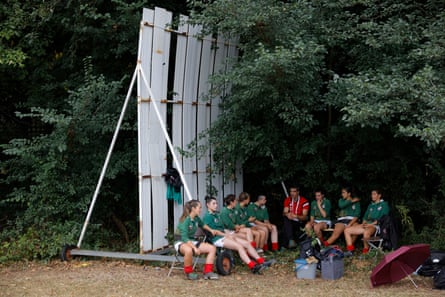
-
Members of the Basque Country women’s U23 500kg team shelter from the rain next to a cricket sight-screen.

-
A Dutchman sharpens the edges on the steel plates attached to his tug of war boots.

An English competitor in the junior men’s 560kg competition watches on from the call tent.
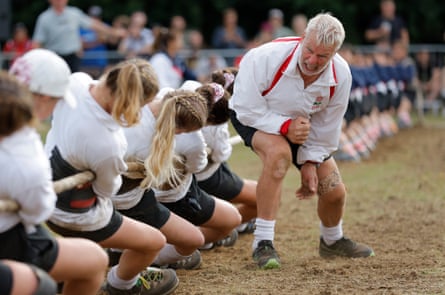
-
Richard Keightley, the coach of the England women’s U23 500kg team, encourages his team in the final against Chinese Taipei, which they lost.
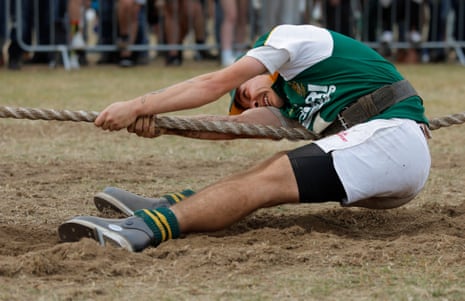
-
A South African in the U23 men’s 600kg final, in which they lost to Switzerland.

-
The Belgian men’s senior 680kg team on their way to winning bronze.
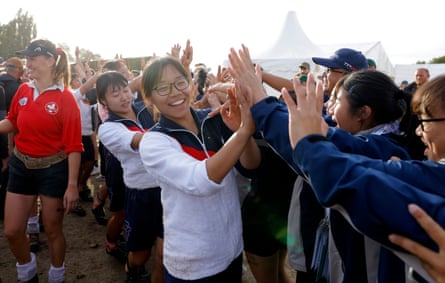
-
The Chinese Taipei women’s 500kg team are welcomed by their supporters after victory in the final over Switzerland.
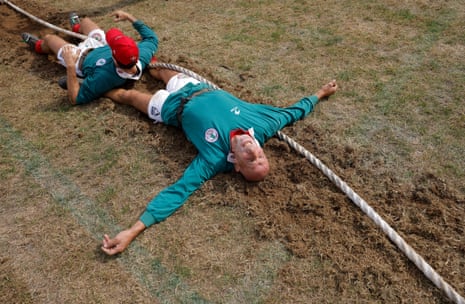
-
Jose Antonio Goirigolzarri, 65, of the Basque Country collapses after winning the final of the senior men’s 600kg competition.

 3 months ago
79
3 months ago
79

